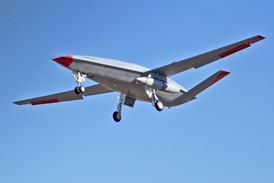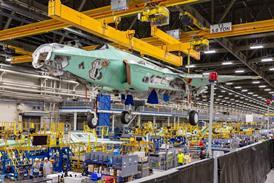German maintenance provider Lufthansa Technik (LHT) is developing a laser-based paint stripping system for application on the latest composite aerostructures.
While paint layers on metallic surfaces can be easily removed using chemical strippers, this is not possible on composite material because the solvents can damage the structure itself.
Paint on carbonfibre and glassfibre surfaces has to be manually sanded down as a result. This is both labour-intensive and risky as the composite material can be damaged if the technician inadvertently applies too much pressure.
Paint manufacturers have since devised coating systems where only the visible topcoat can be removed, while the primer remains on the fuselage. These selective systems allow the use of mild strippers, which only dissolve an intermediate paint layer between the topcoat and primer and do not affect the composite structure underneath.
But Lufthansa Technik director of technology projects Franz-Josef Kirschfink pointed out that if the aircraft sustains damage underneath the intermediate layer, chemical strippers again pose a problem.
He said his engineering team has proven that laser technology can be used to strip paint from composites, and is working on a control mechanism to move the laser head automatically over the surface.
"Modern lasers can achieve much higher removal rates than was previously possible," said Kirschfink. "The equipment works faster and more precisely because the laser recognises which paint layer it is stripping away."
Excessive heat at the illumination point prevented the use of lasers in the past, because it led to burns on the synthetic material.
However, Kirschfink said this issue has been resolved through the development of short-wave laser equipment. "Their penetration depth is so shallow that it can hardly be measured anymore," he said.
While the objective is to develop an automatic system to strip an entire aircraft, Kirschfink said that the sheer size and complex shape of airframes remains a challenge.
Lufthansa Technik's next step will be to develop a demonstrator which can strip large and spherically-shaped areas, such as an engine cowling.
The development is one of a number of future technology projects being part-funded by the German government.
Source: Flight International
















